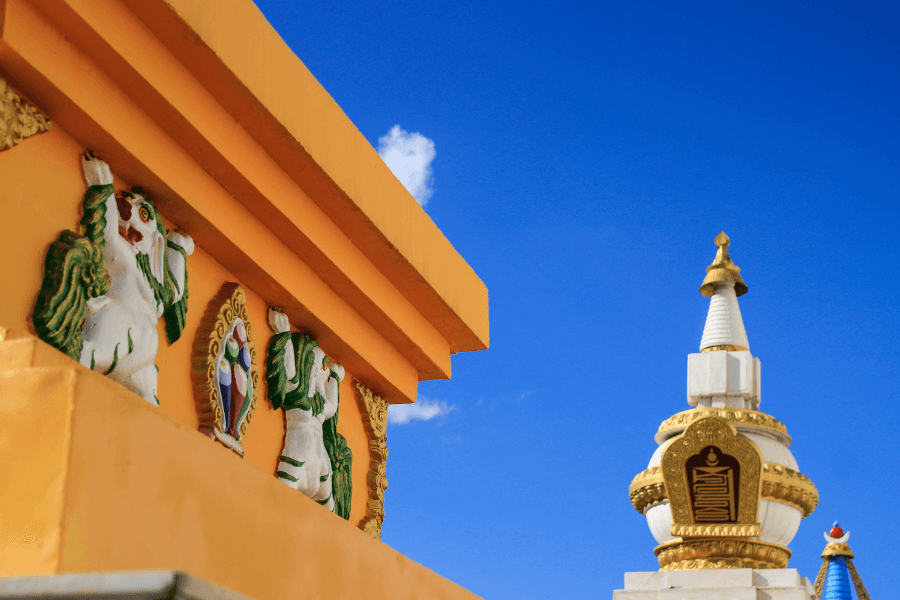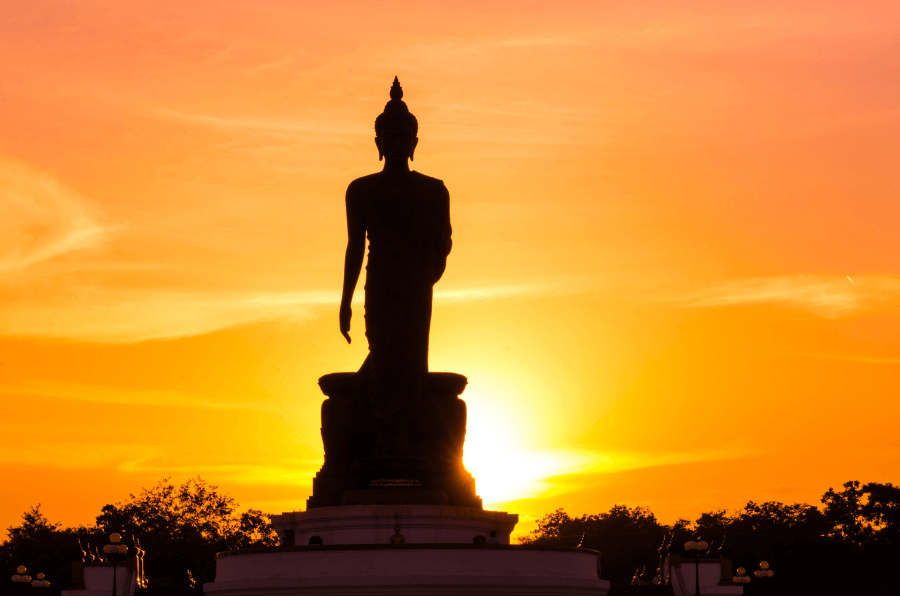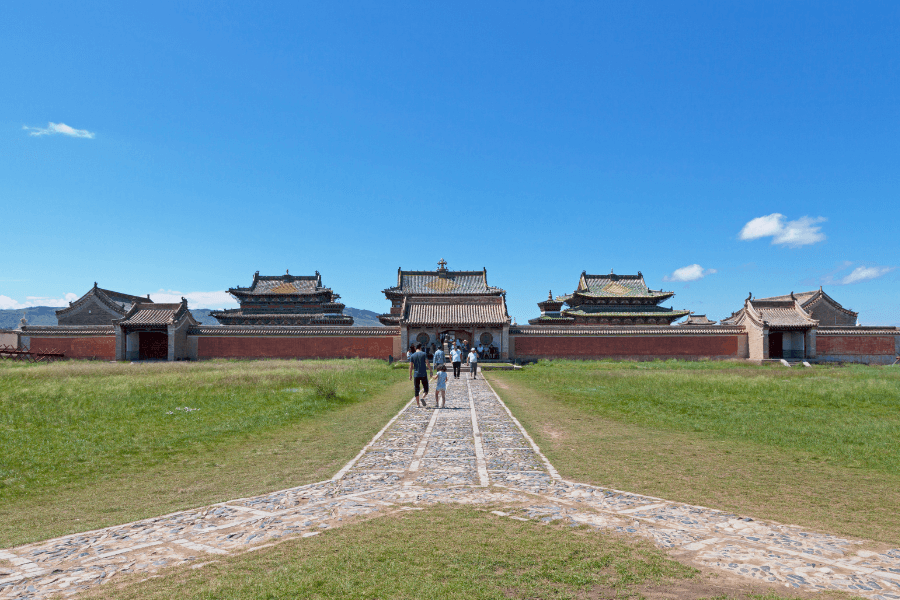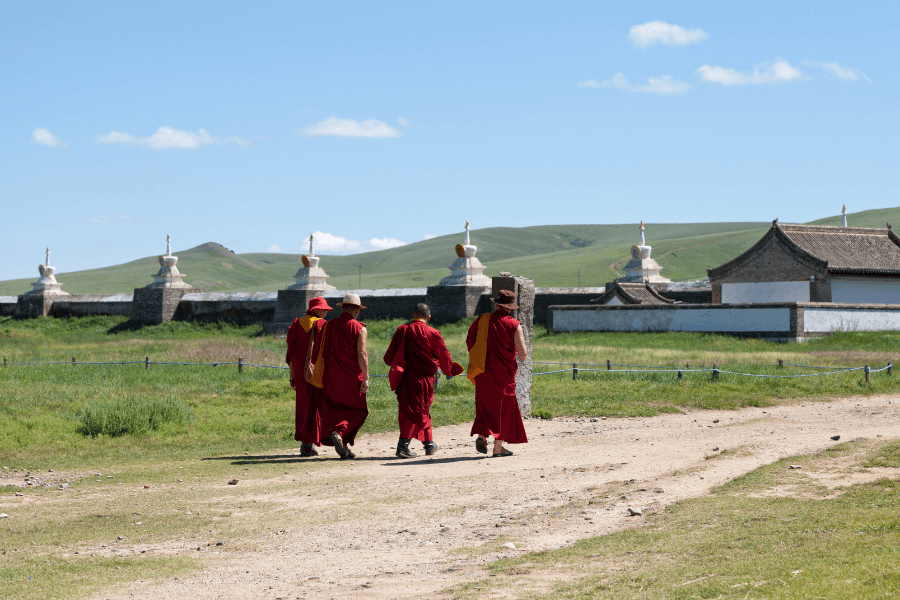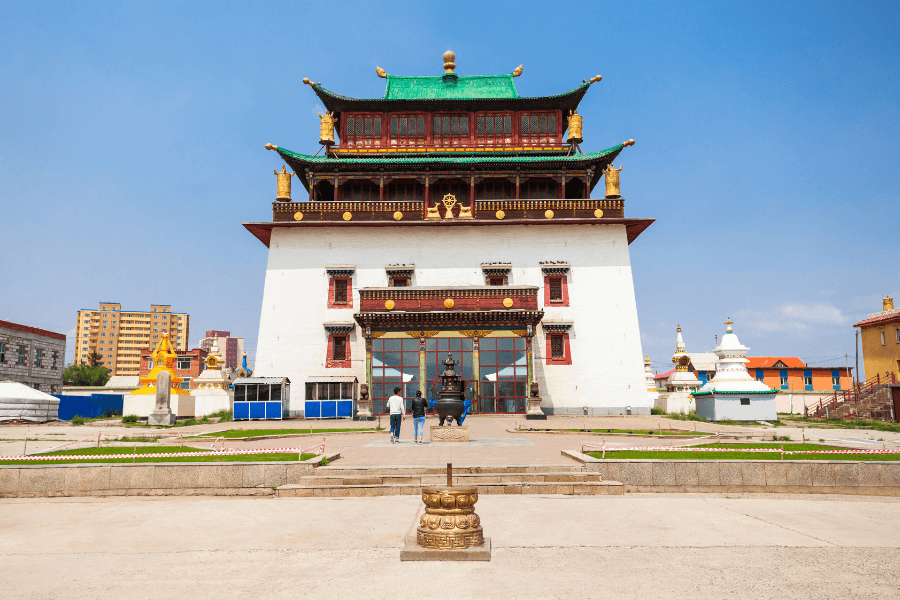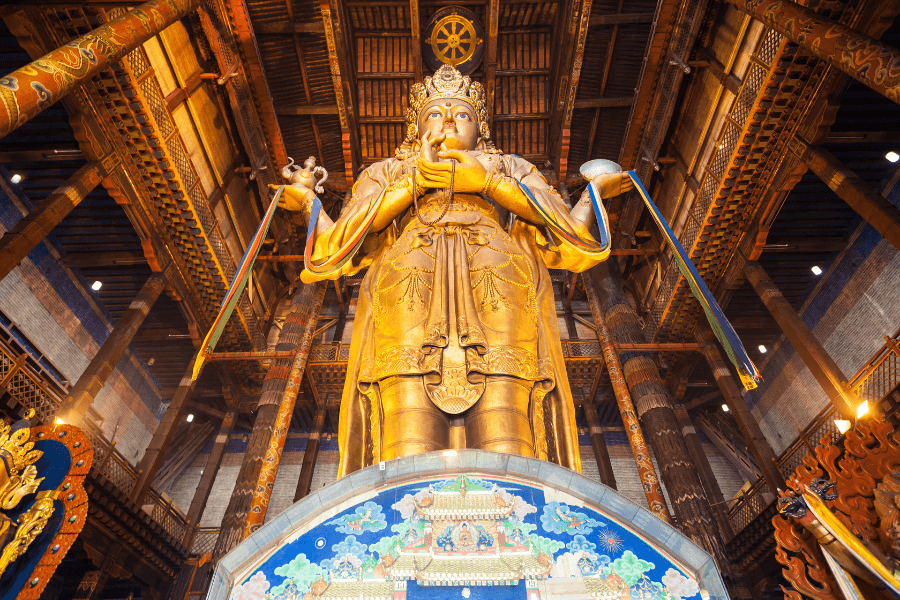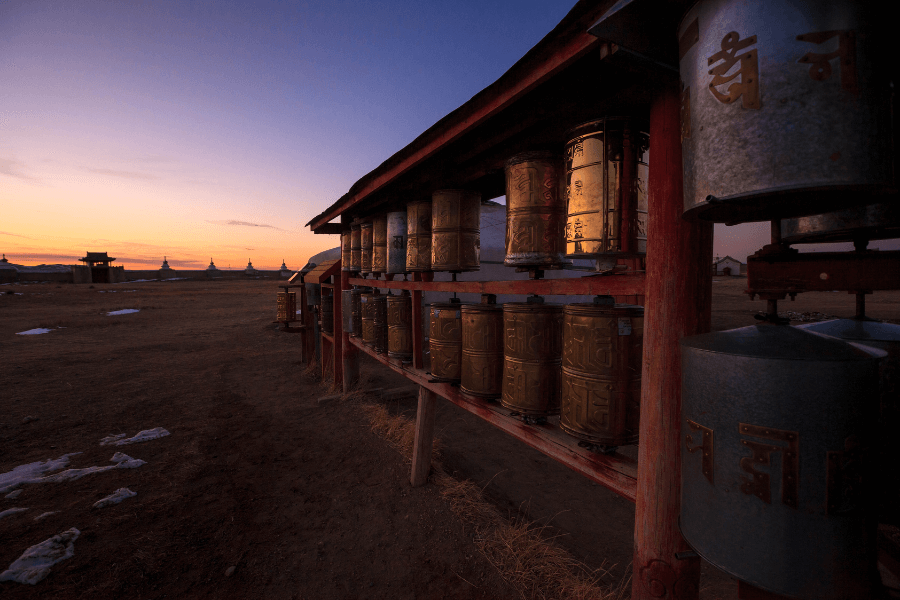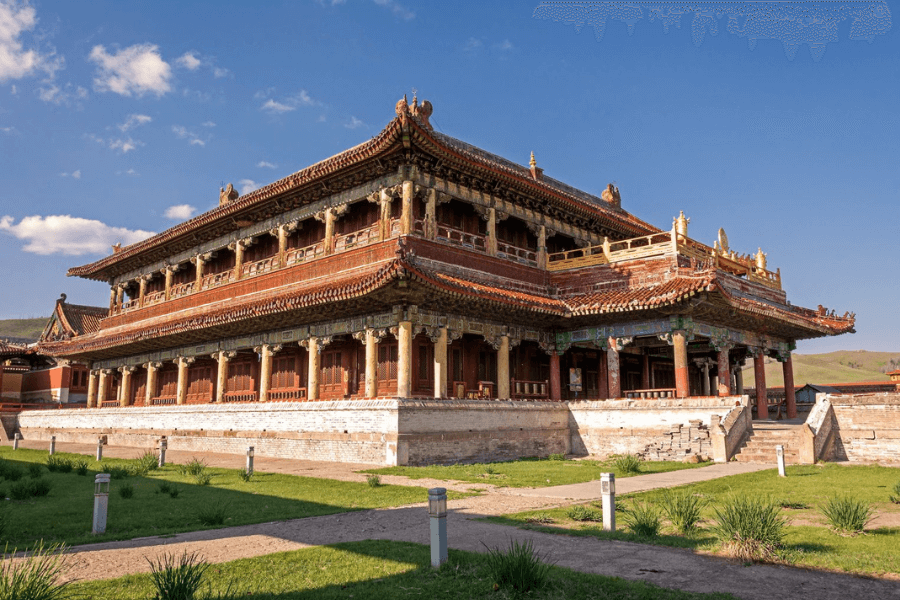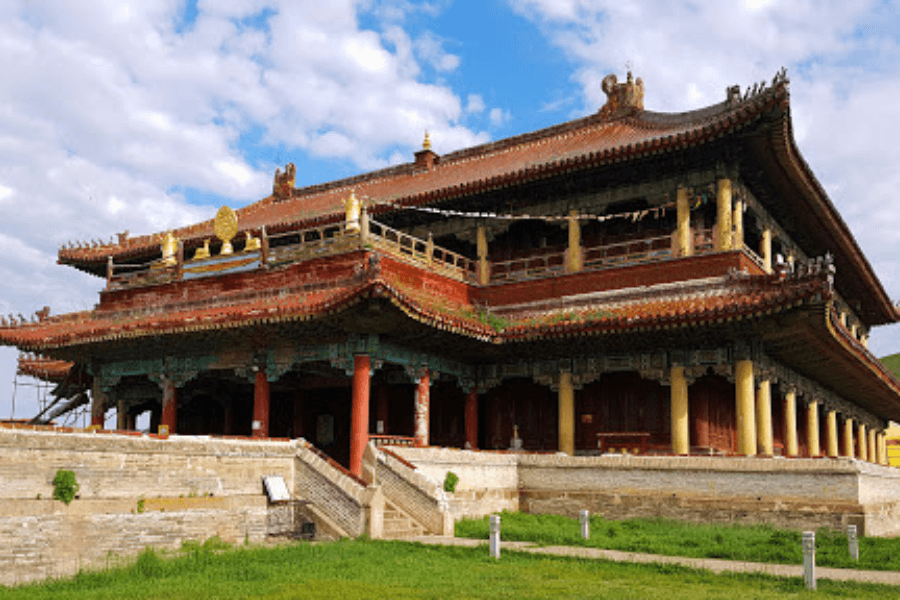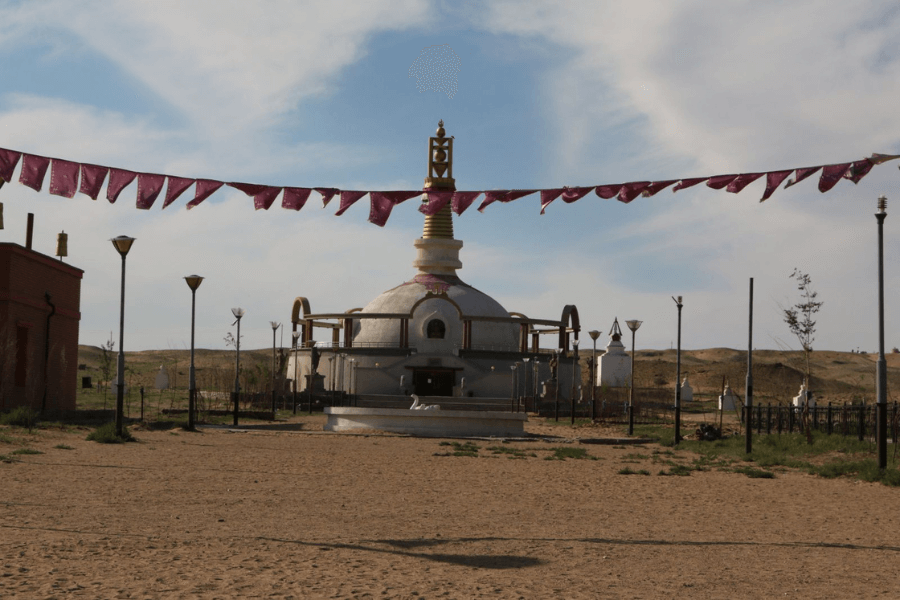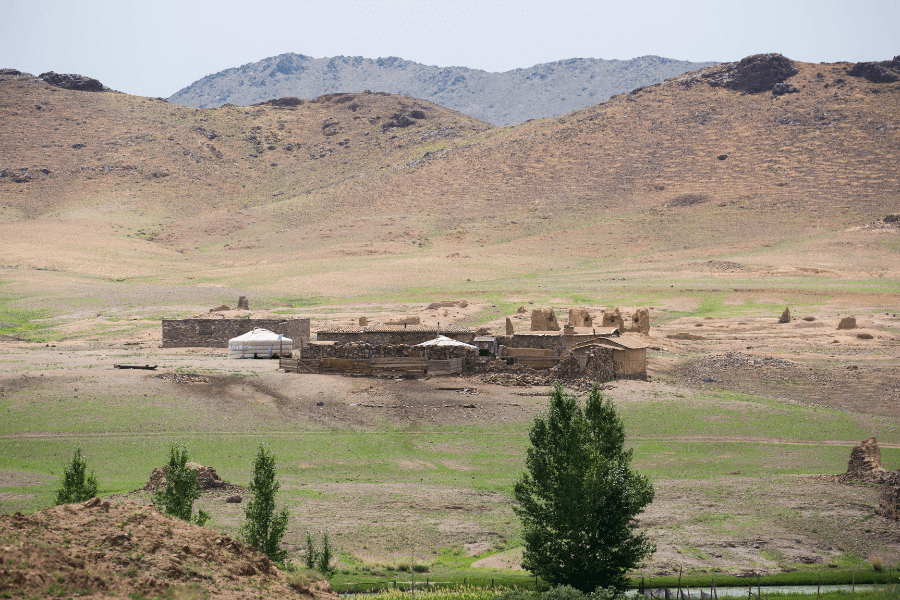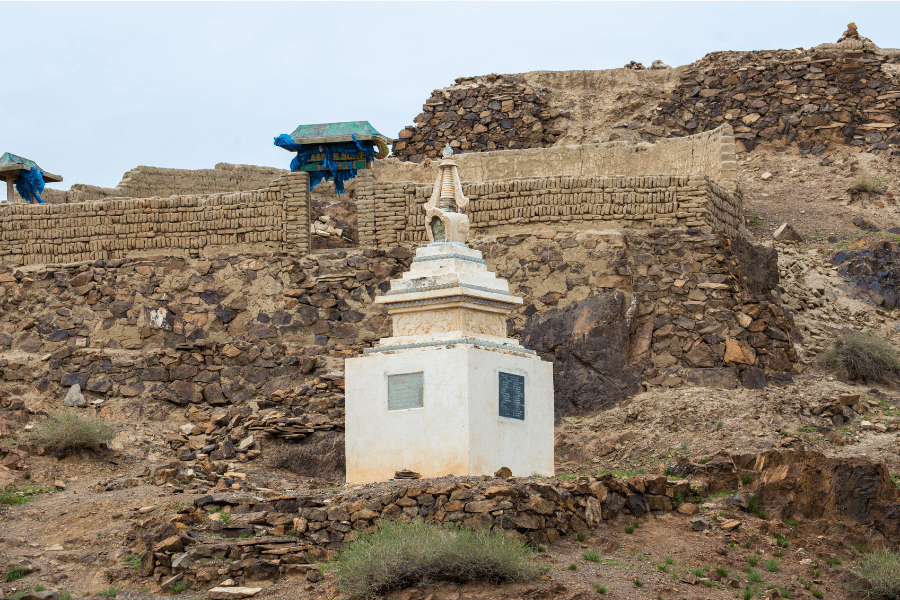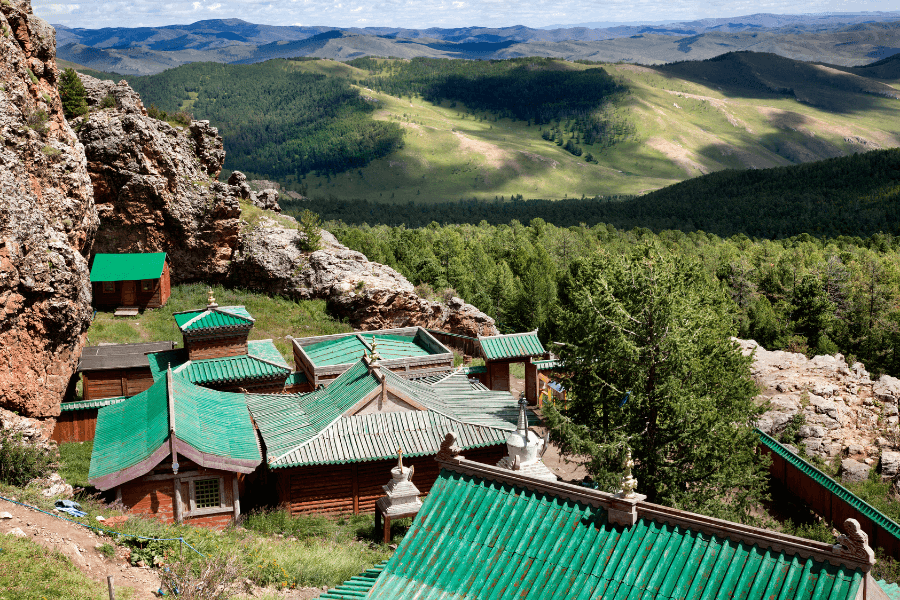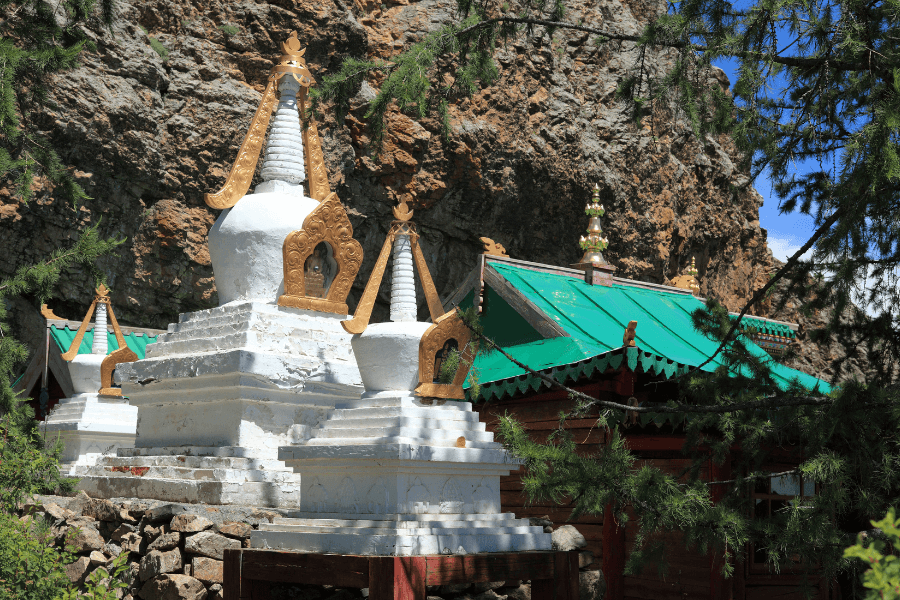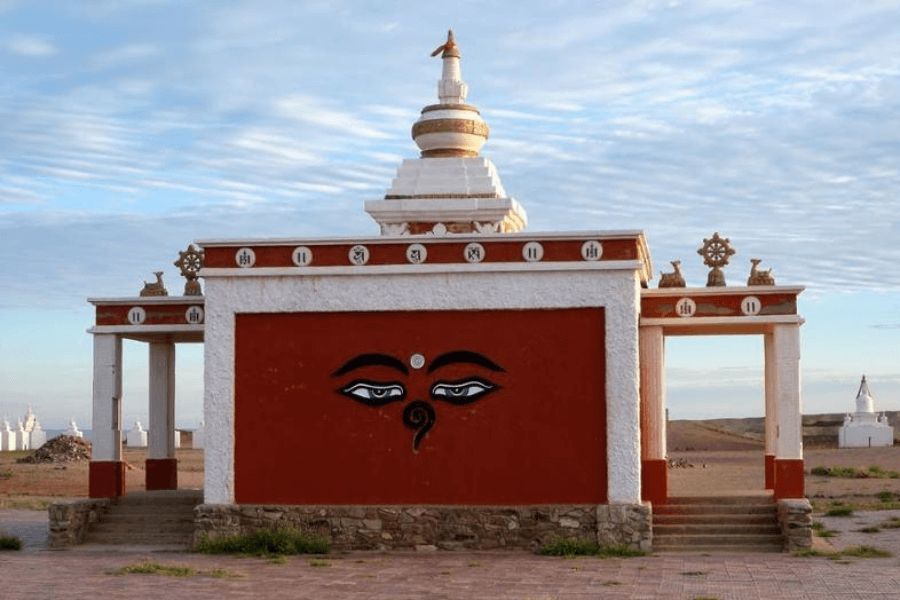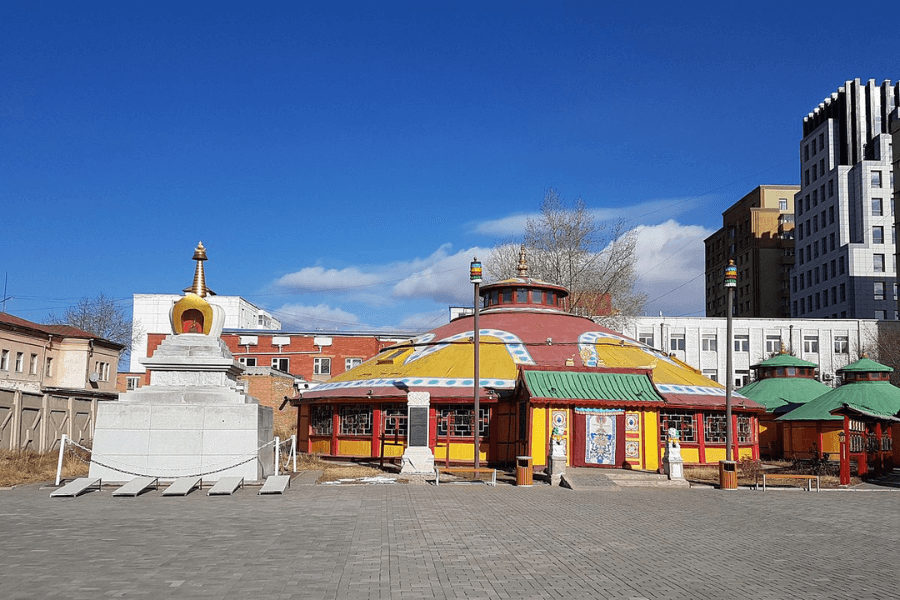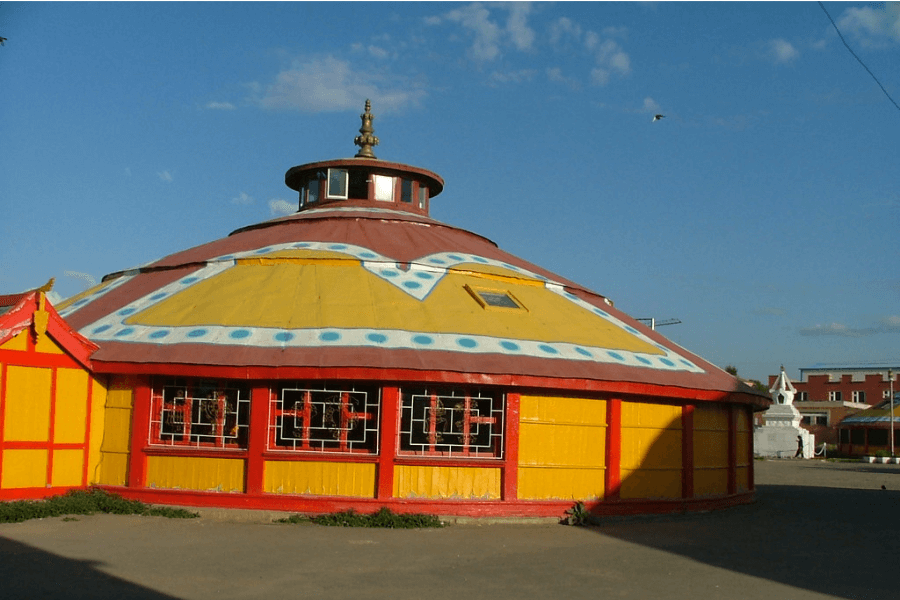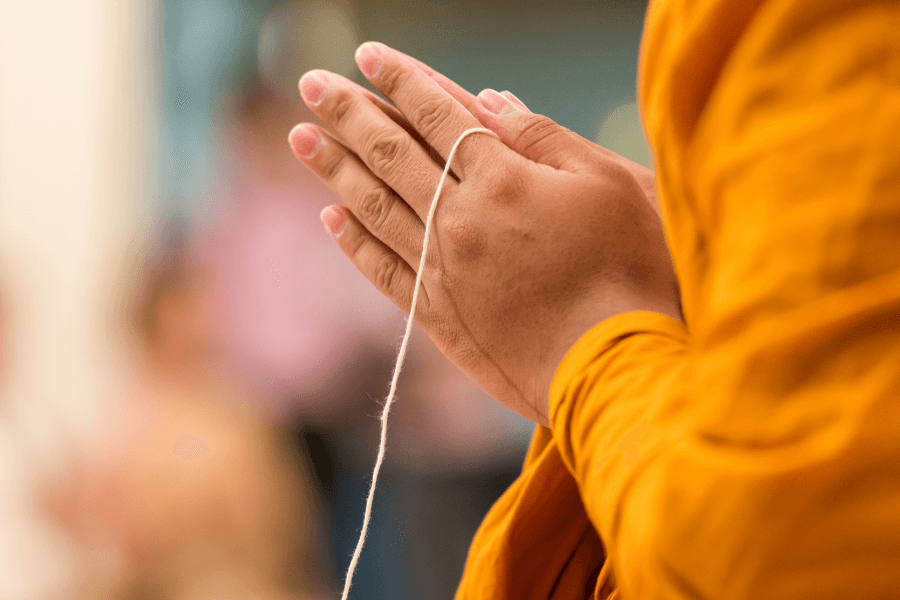Explore the spiritual heart with these top 9 must-visit Buddhist monasteries in Mongolia. Immerse yourself in the rich tapestry of Mongolian Buddhism as you journey through ancient temples and sacred sites. Discover the serenity of Erdene Zuu Monastery, the oldest Buddhist monastery in Mongolia, or marvel at the intricate artwork of Gandantegchinlen Monastery. From the tranquil landscapes of Amarbayasgalant Monastery to the vibrant rituals of Amarbayasgalant Monastery, each destination offers a unique glimpse into Mongolia's spiritual heritage. Embark on a soulful adventure and make unforgettable memories on your Mongolia vacations.
Introduction to Buddhism in Mongolia
Buddhism holds a central place in the spiritual and cultural fabric of Mongolia, with a history that spans centuries and influences the lives of its nomadic inhabitants. Rooted in Tibetan Buddhism, Mongolian Buddhism has evolved to embody its own distinctive characteristics, reflecting the unique traditions and lifestyle of the Mongolian people.
Throughout Mongolia's pre-revolutionary era, Buddhism flourished under the guidance of a succession of Living Buddhas, known as Jebtzun Damba. These revered spiritual leaders wielded considerable influence, both as religious figures and as political authorities. However, the communist takeover in the 20th century led to the removal of the last Jebtzun Damba, marking a significant shift in Mongolia's religious landscape.
Traditionally, monasteries served as vital centers of learning and power in Mongolian society. They provided not only spiritual guidance but also served as hubs for education, cultural preservation, and governance. Monastic life played a pivotal role in shaping the social structure and values of Mongolian communities, fostering a deep reverence for Buddhist teachings and principles.
Despite the challenges posed by political upheavals and periods of repression, Buddhism remains deeply ingrained in the daily lives and rituals of the Mongolian people. Today, monasteries continue to serve as focal points for religious practice, education, and community gatherings, preserving the rich heritage of Mongolian Buddhism for future generations.
List of Must Visit Buddhist Monasteries in Mongolia
Kharkhorin Erdene Zuu Monastery
Kharkhorin Monastery, also known as Erdene Zuu Monastery, stands as a testament to Mongolia's rich cultural and religious history. Established in 1585 by Altan Khaan of the Golden blood lineage, this monastery was constructed atop the ruins of Kharkhorin, the ancient capital of Mongolia.
At its zenith, Erdene Zuu Monastery boasted a complex comprising 60 smaller temples and accommodated up to 1000 lamas at a time. However, the devastating effects of the communist purge in 1939 left much of the complex in ruins, with only a few preserved structures functioning as museums by 1945.
Despite the damage inflicted during the communist era, Erdene Zuu Monastery played a pivotal role in the propagation of Tibetan Buddhism in Mongolia during the 17th century. Following the collapse of communism, the monastery reopened its doors to the public, with Tibetan-style monasteries once again welcoming worshippers within the stupa walls.
Today, Erdene Zuu Monastery serves as a cultural and historical landmark, offering visitors the opportunity to explore its temple complex and immerse themselves in the spiritual ambiance of the site. The monastery's Chinese-style architecture adds to its allure, providing a glimpse into Mongolia's diverse religious heritage. Visitors to Kharkhorin Monastery can also explore the nearby Kharkhorin Museum, which houses artifacts and findings from the ancient capital, providing insight into the rich history of the region.
Gandantegchinlen Monastery
Gandantegchinlen Monastery, situated in the heart of Ulaanbaatar, Mongolia, stands as a testament to the enduring spirit of Tibetan-style Buddhism in the region. Founded in 1809 by either the fourth or fifth Jebtsundamba Khutuktu, spiritual leader of Tibetan Buddhism in Mongolia, it has withstood centuries of turmoil and upheaval, emerging as a cherished symbol of faith and resilience. Since the fall of communism in 1990, Gandantegchinlen Monastery has undergone a remarkable restoration, reclaiming its status as a thriving center of Tibetan Buddhism. Today, it serves as a monastery, library, and educational institution, welcoming both locals and tourists to explore its sacred grounds.
At the heart of the Mongolian Buddhist Monastery lies the majestic Migjid Janraisig Süm, a towering 25-meter-tall statue adorned with precious stones, symbolizing compassion and enlightenment. Visitors are captivated by the serene atmosphere and awe-inspiring architecture as they immerse themselves in the monastery's rich spiritual heritage.
Notable attractions within the Mongolian Buddhist monastery complex include the Zanabazar Buddhist University, temples dedicated to Avalokiteshvara, Buddhist Colleges of Philosophy, a College of Medicine and Astrology, and Tantric Colleges. Devotees and pilgrims from all walks of life come to pray, donate, and participate in traditional rituals, adding to the monastery's vibrant atmosphere.
As visitors stroll through the monastery's courtyards and temples, they are greeted by the sight of Bodhisattva sculptures, prayer wheels, and the tranquil surroundings of the pilgrimage path. The presence of the 13th Dalai Lama's former residence, the Didan-Lavran Temple, adds to the Mongolian Buddhist monastery's historical significance and spiritual allure.
Amarbayasgalant Monastery
Amarbayasgalant Monastery, a breathtaking architectural marvel nestled on the southern slope of Burenkhan Mountain in Mongolia, stands as a testament to the nation's rich religious heritage. Constructed between 1727 and 1737 under the auspices of the Manchu emperor Yongzheng of the Qing dynasty, the Mongolian Buddhist monastery was erected to honor Zanabazar, the revered first Bogd Gegeen, sculptor, and painter of Mongolian Buddhism.
Originally comprising 40 temples and housing thousands of monks, Amarbayasgalant Monastery underwent significant restoration efforts starting in 1988, following decades of neglect and the devastating impact of the 1930s communist purge. Today, it boasts 28 temples within four main courtyards, adorned with intricate roof tile work and enamel ceilings crafted by master artisans.
Recognized by UNESCO as a World Heritage Site in 1996, Amarbayasgalant Monastery continues to serve as a hub for religious rituals and cultural preservation. Notably, the monastery hosts the Gongoriin Bumba sacrifice, one of the largest religious ceremonies in mid-August, drawing scores of worshippers from the local community.
The centerpiece of Amarbayasgalant is the majestic Tsogchin Dugana main temple, a two-story architectural wonder showcasing remarkable craftsmanship. Its four middle pillars, serving as rain ducts, connect with tunnels beneath the floor, exemplifying the Mongolia Buddhist monastery's ingenuity in design and construction.
While the monastery is home to 40-50 resident monks, it also welcomes visitors to witness its religious ceremonies and explore six accessible temples. However, admission fees are required for foreigners to enter. Amarbayasgalant's significance extends beyond its spiritual realm, as it safeguards invaluable cultural treasures such as the Ganjuur and Danjuur, ancient scripts encompassing philosophy, medicine, geography, and more.
Khamriin Khiid Monastery
Khamriin Khiid Monastery, established in the 1820s by the renowned 19th-century Mongolian educator, poet, and artist, Danzanravjaa, stands as a testament to his multifaceted legacy. Under his guidance, the monastery evolved into a vibrant center of learning and culture, housing a public school, theater, museum, and library.
One of the notable features of Khamriin Khiid Monasterywas the "Namtar Duulakh Datsan" or story-singing college, established in the 1830s as Mongolia's first professional theater. This institution played a pivotal role in preserving and promoting Mongolian cultural heritage through theatrical performances and storytelling. Additionally, the nearby "Khuukhdiin Datsan" provided non-religious education, further emphasizing Danzanravjaa's commitment to holistic learning.
Khamriin Khiid Monastery holds special significance as the birthplace of Danzanravjaa's famous artworks, including the transcendent Buddhas, Soyombo Alphabet, and the National Symbol Soyombo. These masterpieces reflect his artistic prowess and spiritual vision, leaving an indelible mark on Mongolian culture and identity.
Ongiin Monastery Ruins
Ongiin Khiid Monastery, a significant historical and cultural site in Mongolia, traces its roots back to the 18th century when Khutagt Lama Ishdonilkhundev and Bragri Lama Damtsagdorj established it between 1760 and 1810. Initially named "Gundujinbolin," this Buddhist monastery in Mongolia comprised three main complexes: Bragri Lama Damtsagdorj (Ongi Monastery) in the north, Middle Monastery in the central region, and Khoshuu Monastery to the south.
By the early 20th century, Ongiin Khiid had flourished into a sprawling complex with seventeen temples and over one thousand practicing monks, making it a prominent center of Buddhist learning and influence across Mongolia. However, its prosperity was short-lived as political repression began to target religious institutions, culminating in the execution of around two hundred high-ranking monks and the confiscation of monastery properties by the communist regime starting from 1925.
Visitors to Ongiin Khiid Monastery can explore the ruins, engage in hikes to nearby sacred sites, and participate in annual rituals such as worshiping the ovoo on Burkhant Shashir Mountain. Other notable activities include visiting the ruins of ChinaTown, believed to have historical significance dating back to the era of Genghis Khan, and exploring the meditation caves once utilized by monks for spiritual contemplation.
To accommodate tourists, several ger camps are available in the area, offering comfortable accommodations and guided tours of the Mongolian Buddhist monastery and its surroundings. Notably, the Secret of Ongi and Ongi Energy are renowned for their quality services and hospitality.
Tuvkhun Monastery
Perched atop the picturesque Shireet Ulaan Mountain in Mongolia's Uvurkhangai province lies the revered Tuvkhun Monastery. Built in 1653 by the esteemed Undur Gegeen Zanabazar, the Mongolian Buddhist monastery's tranquil setting amidst lush forests of larches and cedars makes it a haven for spiritual seekers and nature enthusiasts alike. Located 20km north of Bat-Ulzii soum, Tuvkhun Monastery holds a significant place in Mongolian history and culture.
Undur Gegeen Zanabazar, recognized as the first Head of Mongolian Buddhism, founded Tuvkhun Monastery as a retreat for meditation and artistic creation. Here, amidst the solitude of the mountains, Zanabazar crafted remarkable works of art, including the iconic Soyombo script, which remains a symbol of Mongolia's independence and cultural heritage.
Initially a humble wooden cabin, Tuvkhun Monastery expanded over time with the support of local communities, eventually comprising fourteen small temples. Its name, "Tuvkhun," meaning "Blissful and solitary land," reflects its serene ambiance and spiritual significance. Today, visitors can explore this Buddhist monastery's restored structures, including three small temples nestled on the rocky cliffside, meditation caves, and sacred sites dedicated to natural deities.
Khamar Monastery
Located 500 kilometers southeast of Ulaanbaatar Mongolia, in the Sainshand soum of Dornogobi province, stands the historic Khamar Monastery, also known as Uvurbayasgalant Khamriin Khiid Monastery. Established in 1818 by the renowned 19th-century Mongolian educator and literary figure, Danzanravjaa, the monastery holds a significant place in Mongolia's cultural and religious landscape.
The Buddhist monastery in Mongolia boasted a diverse array of features, including a series of caves to the north where monks practiced yogic exercises and meditation in isolation for extended periods, enhancing both their physical and spiritual capabilities. Khamar Monastery reached its zenith with four main sections – East Khuree, West Khuree, Tsokhon, and Duinkher – comprising four colleges (Datsan), a children's school, over eighty temples, and a resident population of over five hundred lamas. The monastery was re-established in the 1990s through the initiative and support of local communities and the religious community, marking a resurgence of Mongolia's spiritual heritage.
One of the most intriguing aspects of ancient Khamriin Khiid was Khoid Shambala, known as the northern paradise and revered as a sacred site by the Mongolian people. Today, Khoid Shambala continues to draw visitors seeking spiritual purification and healing, believed to be imbued with powerful energy conducive to physical and emotional well-being.
Dashchoilin Monastery
Dashchoilin Monastery, located in Ulaanbaatar, Mongolia, holds a significant place among the country's remaining monastic structures. Established in 1890, Dashchoilin once thrived as a center of Buddhist learning and practice, accommodating hundreds of lamas or monks within its walls. However, its existence was abruptly halted in 1938 when governmental actions led to its closure and subsequent deterioration.
Despite its troubled history, Dashchoilin Monastery saw a revival in the 1990s with the establishment of Zuun Khuree Dashchoilin Monastery. Today, this revitalized institution serves as a sanctuary for over 100 monks, boasting three intricately adorned temples – Tsogchen, Sakhius, and Gandanchoinkhorlin – housing rare and revered statues.
Dashchoilin Monastery remains an important cultural and religious hub in Ulaanbaatar, hosting annual ceremonies such as the Maitreya and Tsam religious mask dances. Additionally, the monastery's educational endeavors have been revitalized with the establishment of the Zuun Khuree College in 1998. This college offers a diverse curriculum encompassing basic Buddhist teachings, philosophical studies, and language courses in Indian, Tibetan, and Mongolian traditions.
Things You Should Know Before Visiting Buddhist Monasteries in Mongolia
Buddhist monasteries in Mongolia offer a serene retreat and a glimpse into the spiritual traditions of the region. While visiting these sacred spaces, it's important to observe certain social conventions and etiquette to show respect for the monastery, its inhabitants, and its customs. Here are some tips to keep in mind:
Mindful Body Language
When greeting or showing respect to monks or elders, use the añjali gesture. Hold your hands palm-to-palm in front of your heart, or raise them to your forehead.
If paying respect to a shrine or senior monk, bow three times while kneeling, with hands placed on the floor in front of your knees and forehead touching the ground.
Respectful Conduct
Avoid pointing your feet at shrines or monks, as it is considered impolite in Buddhist culture.
Refrain from lying down or stretching out in the meditation hall, and move or shift positions quietly during meditation or Dhamma talks.
Interaction with Monastics
Understand that monks adhere to a strict code of discipline, including rules regarding contact with the opposite sex. Show respect by greeting monks with the añjali gesture instead of shaking hands or embracing.
Respect for Monastery Property
Remove your shoes before entering any Mongolian Buddhist monastery building as a sign of respect.
Maintain cleanliness in dwellings and strive to leave them in a better condition than when you arrived.
Seek permission before taking anything from monastery storerooms, including food, and practice contentment with what is offered during meal times.
Community Life and Sangha
Remember that everything in the monastery belongs to the sangha, the community of ordained disciples. Treat monastery property with care and respect.
If you require something outside of designated meal times or beyond what is offered, consult the kitchen manager or guest monk for assistance.
By observing these etiquette guidelines and approaching your visit with a well-intentioned attitude of courtesy and respect, you can contribute to the harmony and grace of the monastery community while also enriching your own spiritual journey.

